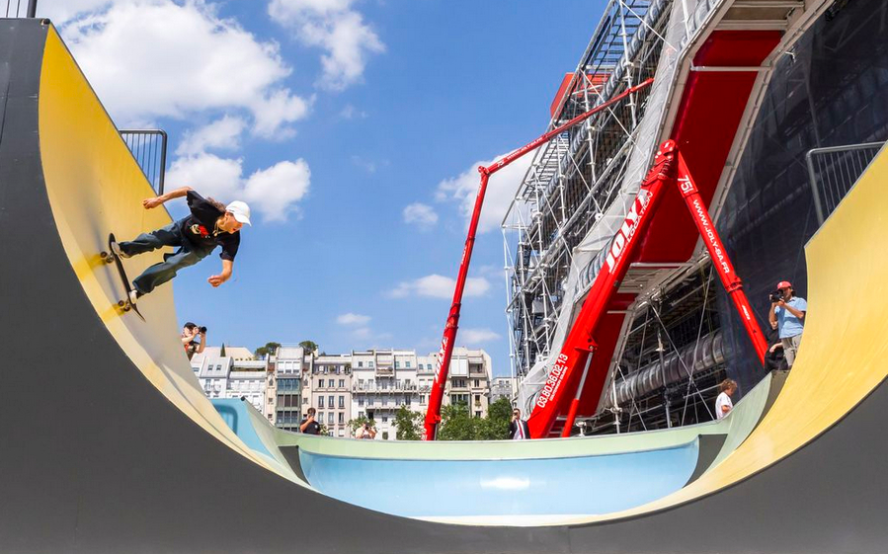Brachistochrone ("minimum time")
This activity belongs to the GeoGebra book The Domain of the Time.
This animation compares the fall of masses along a cycloid, a straight line, and a circle in real time, neglecting friction. The animation doesn't use formulas (no trigonometry, equations, or differential calculus), only adjusts the vectors directing the movement.
Imagine you want a ball to travel, under its own weight, from a higher point H to a lower point P (outside the vertical of H) in the shortest possible time. Initially, you might think that following the straight line, as the shortest path, will also be the fastest, that is, following the inclined plane from H to P (orange line). But that’s not the case.
What curve should it follow, then? This curve is called the brachistochrone, and it has a fascinating story. In the late 17th century, Swiss mathematician Johann Bernoulli challenged the greatest mathematicians of the time, giving them six months to solve two complex problems. At the end of the period, only Leibniz had solved one of the two, but using cumbersome mathematical methods, so the deadline was extended by another six months.
Almost a year later, one of the problems remained unsolved, and the other awaited a more elegant, general solution. It was at this point that Newton was informed of both problems. Newton solved both problems overnight and published the solutions anonymously. Upon seeing the solutions, Bernoulli famously declared he was certain that Newton had written them. When asked how he knew, he responded with the Latin phrase Tanquam ex ungue leonem, which means by the claw, one knows the lion. Bernoulli meant that only Newton could have solved such problems with the characteristic clarity, conciseness, and brilliance of the great genius.
As you might guess, one of the two problems was finding the brachistochrone, the curve of fastest descent. And the solution, once again, is none other than the inverted cycloid. Specifically, the one with the highest point (H) as the upper end, as shown in the construction.
In the animation, you can adjust the position of the lower point (P). The cycloid will always be the fastest descent curve from H to P. We've added the circle passing through H, S, and P, because Galileo believed the brachistochrone should be that circle (green line), but he was mistaken (though not by much), as you can see in the construction. The green point follows a pendulum-like motion, as we've seen, with a period slightly longer than the cycloid. It's evident that the straight line is far from being the best option (though it improves as its slope increases, meaning P is closer to H).
